Sound: 









Value: 








 (Read about our ratings)
(Read about our ratings)
Measurements can be found by clicking this link.
 Since the rise in popularity of high-quality headphones, driven at least in part by the ubiquity of smartphone use, we’ve seen many products aimed at enhancing the listening experience of those on the go. iFi Audio’s xCAN can be described as a high-quality headphone amp designed to inconspicuously mate with your smartphone and fit in your pocket or purse. What distinguishes the xCAN from other similar products is its lack of a USB input for its internal DAC, which can be accessed only via Bluetooth. So who is the target demographic? First, the budget-conscious might be interested -- the xCAN costs only $299 USD, vs. iFi’s xDSD at $399. Second, perhaps, are users uninterested in fussing with USB connections but who want to enhance their smartphone listening experience by using what are still the two most common audio outputs: Bluetooth and the 3.5mm headphone jack.
Since the rise in popularity of high-quality headphones, driven at least in part by the ubiquity of smartphone use, we’ve seen many products aimed at enhancing the listening experience of those on the go. iFi Audio’s xCAN can be described as a high-quality headphone amp designed to inconspicuously mate with your smartphone and fit in your pocket or purse. What distinguishes the xCAN from other similar products is its lack of a USB input for its internal DAC, which can be accessed only via Bluetooth. So who is the target demographic? First, the budget-conscious might be interested -- the xCAN costs only $299 USD, vs. iFi’s xDSD at $399. Second, perhaps, are users uninterested in fussing with USB connections but who want to enhance their smartphone listening experience by using what are still the two most common audio outputs: Bluetooth and the 3.5mm headphone jack.
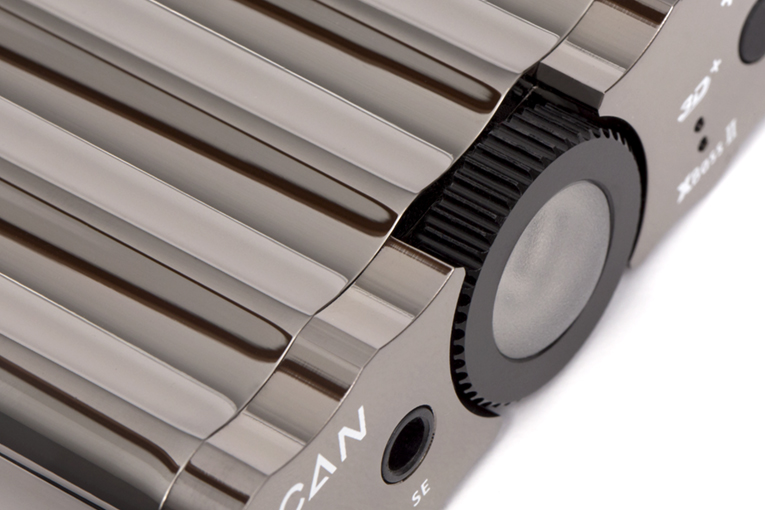
Description
The iFi xCAN offers only one digital and two analog inputs: respectively, Bluetooth (AAC, aptX, aptX LL, SBC), and single-ended (3.5mm TRS) and balanced (2.5mm TRRS) jacks. The aptX HD Bluetooth codec is not included, which is surprising and unfortunate -- this popular codec is available on more and more higher-end Android smartphones.
There are two outputs, both always active: single-ended (3.5mm TRS) and balanced (2.5mm TRRS). The xCAN’s only other connector, a USB-C input, is provided for charging the device. A small LED below this port indicates the battery’s charge status.
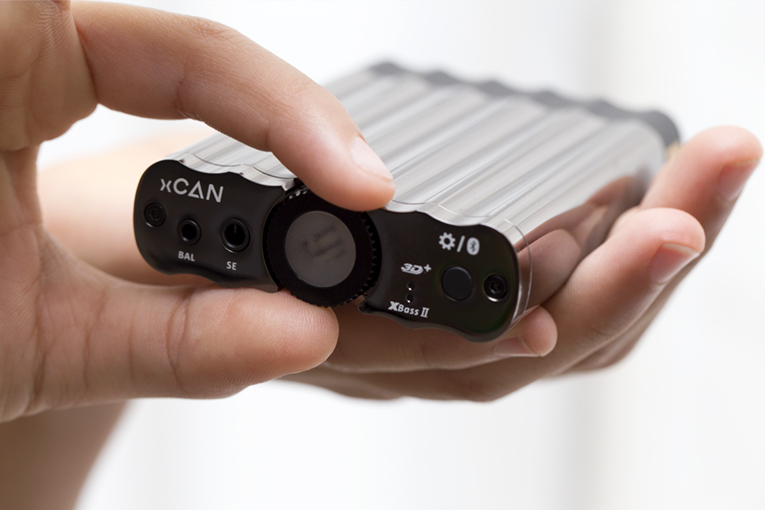
According to iFi’s website, the xCAN’s rechargeable internal battery is specified to provide more than eight hours of playing time on a full charge; the manual, however, states 12 hours. Hmm. I managed to squeeze almost 12.5 hours of continuous music via Bluetooth from a single charge; of course, your mileage may vary. From the xCAN’s single-ended output, its internal amp is specified to output 600mW into 16 ohms, 380mW into 32 ohms, or 45mW into 300 ohms -- but when the xCAN is used to drive balanced cans, iFi claims 1W into 32 ohms, 800mW into 64 ohms, or 90mW into 600 ohms. This little pocketsize wonder should be able to drive just about any headphones. According to iFi, the xCAN uses an exclusive FET-input, low-noise op-amp, and a digitally controlled volume attenuator that provides 114 steps of 1dB each.
In the box
The xCAN comes with a drawstring carrying pouch with a slit in the bottom to pass cables through, as well as Velcro tabs for mounting it to your smartphone, and various short (5”) cables and adapters: a USB-A-to-USB-C charging cable, a male-to-male 2.5mm TRRS balanced cable, and a male-to-male 3.5mm TRS single-ended cable.
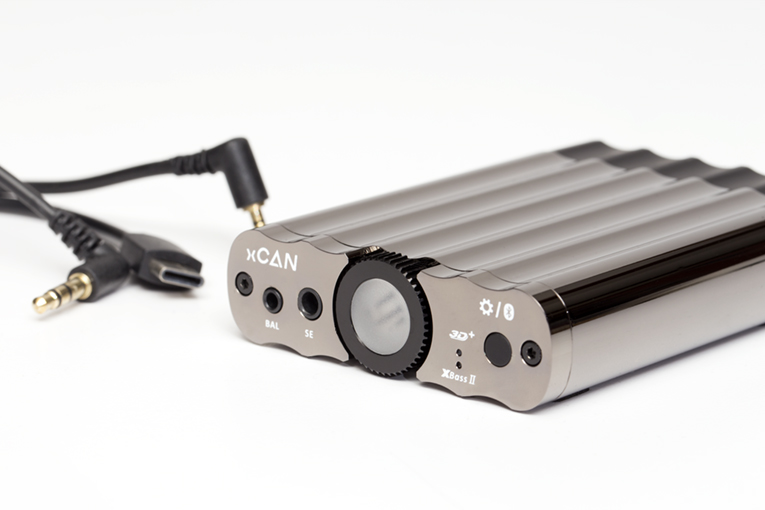
Use
The xCAN was fairly easy to use, but I couldn’t quite figure it all out without the manual (male ego slightly bruised!). An LED-illuminated, multicolor thumbwheel is the volume control; when you push it, it’s the power on/off button. To switch between the Bluetooth and analog inputs, the xCAN must be cycled on and off (a bit inconvenient). To power down the xCAN, hold down the volume control until its LED turns white; holding down the volume control again turns it back on. You select input types by keeping the button pressed down until the LED turns green (analog) or blue (Bluetooth). A small button on the front cycles through the xCAN’s XBass II and 3D+ processing modes, which iFi emphasizes are implemented entirely in the analog domain, thus avoiding the use of “sonically-hindering” DSP. This control doubles as a Bluetooth pairing button.
There’s also an XBass II switch on the back. When XBass II is activated using the front-panel button, the sonic enhancement heard will reflect the setting of this three-way switch: Bass, Presence, or Bass+Presence.
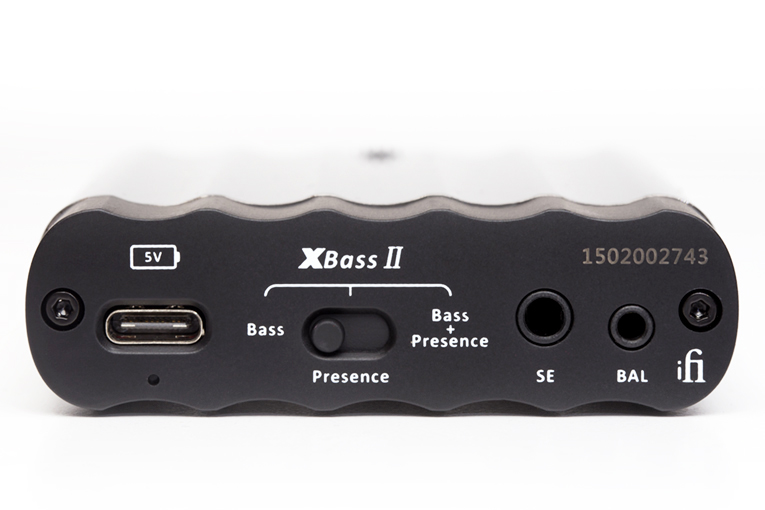
I used the xCAN with an Acer laptop computer running the foobar2000 music player feeding my McIntosh Laboratory C47 preamp-DAC via its asynchronous USB input. The C47’s fixed single-ended analog outputs fed the xCAN’s single-ended analog input. I also paired the xCAN via Bluetooth with my Samsung Galaxy S9 smartphone, and tried the S9’s analog output (3.5mm headphone jack) with the xCAN’s analog single-ended input.
Using its volume control, I began to feel I was getting exceptional value from the xCAN. It seemed to me that a pocket-size, affordable headphone amp such as this had no business providing 114 1dB steps of volume control (all the steps are there -- I counted), from -95dB to +18dB, with a bonus: a six-colored LED that provides feedback about volume level (off/blue/magenta/cyan/green/yellow/red). Very cool!
Like iFi’s xDSD, reviewed by Brent Butterworth, the xCAN suffers from a glossy finish that seems to attract and retain fingerprints. Nonetheless, I appreciated the xCAN’s appearance -- it’s quite nice to look at.
I tried two pairs of headphones with the xCAN: my reference Sennheiser HD 800s, and the stock pair of AKG earbuds supplied with my Samsung S9.
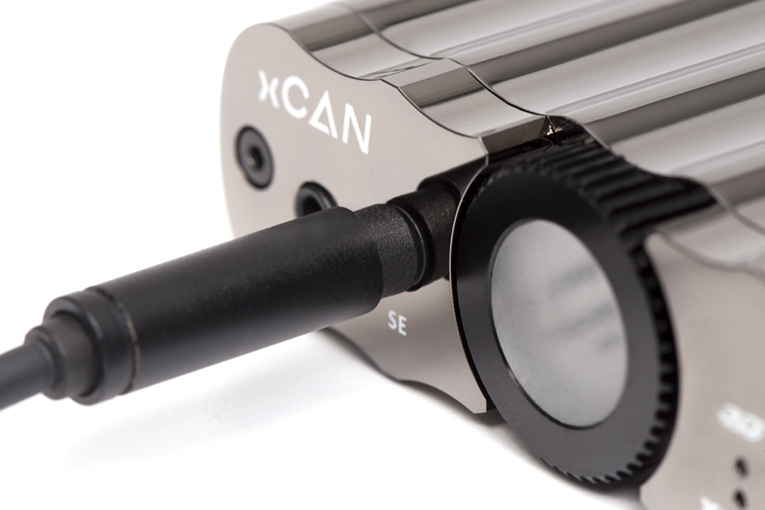
A little background about how I use the Sennheisers: Users and general headphone enthusiasts already know that the HD 800s can deliver great sound but have at least three shortcomings: they’re light on bass, a little dark through the midrange, and have excessive treble/sibilance due to a resonance peak at 6kHz. To address these issues, I’ve implemented the Anaxilus Mod and use a parametric EQ plugin in foobar2000. Both the EQ settings and Mod are explained by Tyll Hertsens on Inner|Fidelity (thanks, Tyll!). I’ve also replaced the HD 800s’ stock single-ended 1/4” phono plug with a balanced male four-pin XLR connector. I then repurposed the chopped-off 1/4” phono plug as a balanced-to-single-ended adapter by wiring it to a female four-pin XLR connector. Now, since I’d gone to the trouble of balancing my HD 800s, and iFi had gone to the trouble of creating a balanced headphone amp in the xCAN, I figured I should do both justice and find a female four-pin XLR-to-male 2.5mm TRRS adapter. So, $28 and less than 48 hours later (Amazon Prime does pay off), the adapter showed up at my door.
Sound
As I listened to music, the Sennheisers and AKG earbuds sounded very good driven by the iFi xCAN. The HD 800s present a relatively difficult load of 300 ohms, but the xCAN had plenty of gain to drive them to uncomfortably loud levels, even when I played an album of very low average loudness through its single-ended output. And with all its sound enhancements disengaged, I found the iFi effectively transparent. Listening to Diana Krall and Ray Charles perform “You Don’t Know Me” on Charles’s Genius Loves Company (16-bit/44.1kHz FLAC, Concord), I heard a familiar sound in which no part of the audioband was muted or accentuated.
I did most of my listening with the HD 800s through the xCAN’s balanced output, but not necessarily for reasons of sound quality. As for audible differences between the balanced and single-ended outputs, I couldn’t hear any once I’d taken into account the 6dB difference in level. (A balanced signal will always have twice the amplitude of a single-ended signal for the same volume setting; i.e., a 6dB increase.) It’s nonetheless useful to have the extra gain available -- plus, I just think it’s cool to use balanced connectors!
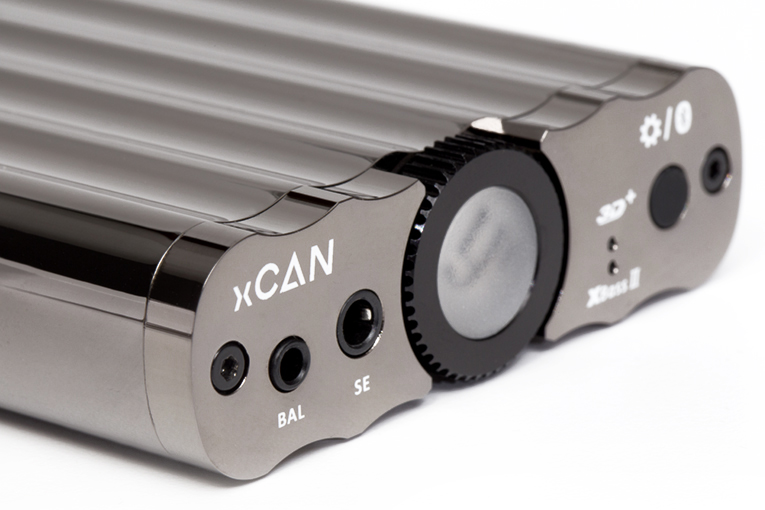
Most of the enhancement options provided by the xCAN proved useful in maximizing my enjoyment of music. The 3D+ setting is yet another implementation of a crossfeed circuit, which tends to bring the soundstage forward while narrowing it. Some people like this effect; I tried it on the xCAN, but found, as I usually do, that the effect’s negative attributes outweigh the positive. For example, listening to “You’re Still Beautiful to Me,” from Bryan Adams’s 18 Til I Die (16/44.1 FLAC, A&M), through the HD 800s with 3D+ engaged caused the guitars, which are panned fairly hard right and left in the mix, to shrink in width and seem to originate from just inside the edges of my head instead of clearly outside my head. I kept 3D+ switched off for all subsequent listening.
XBass II, on the other hand, was a godsend, and possibly my favorite feature of the xCAN. With Adams’s “You’re Still Beautiful to Me,” the Bass feature transformed the HD 800s’ bass response from lightweight to deep, punchy, and satisfying. Conversely, my AKG earbuds, which are already bass heavy, had unnatural-sounding bass bloat with this feature.
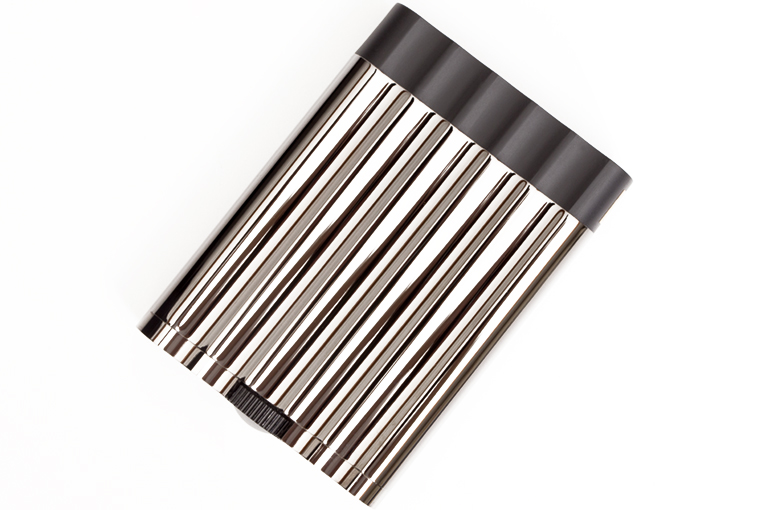
The Presence component of XBass II boosted the lower midrange, which iFi claims many headphones need to produce a more “natural” sound. I couldn’t agree more. Engaging Presence made the Sennheisers and AKGs sound much, much better compared to listening to them flat. For example, in “The End of the Innocence,” from Don Henley’s Actual Miles (16/44.1 FLAC, Geffen), Henley’s voice was more prominent with Presence engaged, creating a far greater sense of intimacy and retrieval of midrange detail. In fact, considering that the Bass and Presence features together obviated two of the HD 800s’ three inherent shortcomings, listening to my Sennheisers with the xCAN configured in this way, and paired via Bluetooth to my S9, was almost as pleasant as listening through my reference setup of laptop running foobar2000, McIntosh C47, and Sennheiser HD 800s.
Comparisons
Unfortunately, I had no comparable products to pit against the iFi xCAN. Instead, I compared it to the headphone amp in my McIntosh C47 preamp, using my reference setup described above. I was careful to match levels, using a 1kHz test tone to within the resolving ability of the xCAN’s volume control, and made sure all sound enhancements (with the exception of the custom EQ plugin for foobar2000) were turned off. I connected the fixed line-level outputs from the C47 to the xCAN’s single-ended analog input, listening to the HD 800s while going back and forth between the C47’s headphone output and the xCAN’s balanced output. The xCAN sounded identical to the C47’s headphone amp -- try as I might, with a variety of recordings, I could hear no differences.
Next, I wanted to see if adding the xCAN to my Samsung S9 would improve the experience of listening to my smartphone. Using the S9 as a source and listening to the AKG earbuds, I could hear no differences in level-matched comparisons of listening to the S9 with or without the xCAN (using both the Bluetooth and analog in). However, engaging the xCAN’s Presence option dramatically improved the character of my little AKG buds -- a definite plus. There’s no analogous native software switch in the S9’s settings to compete with the xCAN’s Presence option. Some might argue that fiddling with the S9’s EQ in the Sound Quality and Effects submenu can offer similar results, but I say it’s tough to beat the simple flick-of-a-switch solution the xCAN offers.
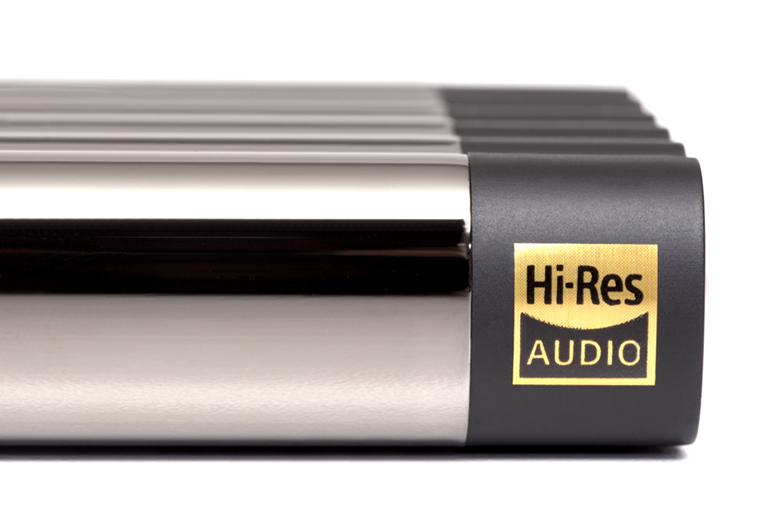
Comparing the HD 800s connected directly to my S9 vs. the xCAN was a different story. The S9 definitely lacked enough gain to adequately drive the HD 800s. With moderately loud recordings, maxing out the S9’s volume control made the HD 800s sing just loud enough, but with softer recordings -- e.g., “The Best Was Yet to Come,” from Bryan Adams’s Cuts Like a Knife (16/44.1 FLAC, A&M) -- the S9 just didn’t have the juice to get there. However, using the S9 as a source connected to the xCAN (analog in) and playing the same soft recording through the iFi’s balanced output (with Bass and Presence enabled) yielded a very different result: all the voltage gain needed for very loud playback, complete with dynamics, punch, and loads of detail, all layered over the HD 800s’ famously wide soundstage!
Switching to the xCAN’s Bluetooth input, I noticed something curious: I was getting far more output at the same volume setting on the xCAN. I carefully measured the difference at 9dB, ensuring that, each time I switched between the xCAN’s analog and Bluetooth inputs, the S9’s volume was maxed and the xCAN’s configuration was otherwise identical. Were there any audible differences once I’d matched the levels between Bluetooth (xCAN DAC) and analog in (S9 DAC)? Tough to tell. Listening again to “The End of the Innocence,” I thought I heard the S9’s DAC masking a bit of top-end information when I focused on the sibilance in Henley’s voice. Why do I think it was the S9’s DAC doing the masking and not the xCAN’s DAC accentuating? I repeated the same listening test using the C47 DAC with xCAN (analog), and it sounded the same as the S9 with xCAN DAC (Bluetooth).
Conclusion
iFi Audio’s xCAN is a great product for those looking to improve their smartphone listening experience. Without its enhancements engaged, its sound was thoroughly transparent, providing enough gain for most any pair of headphones without any colorations or ill effects.
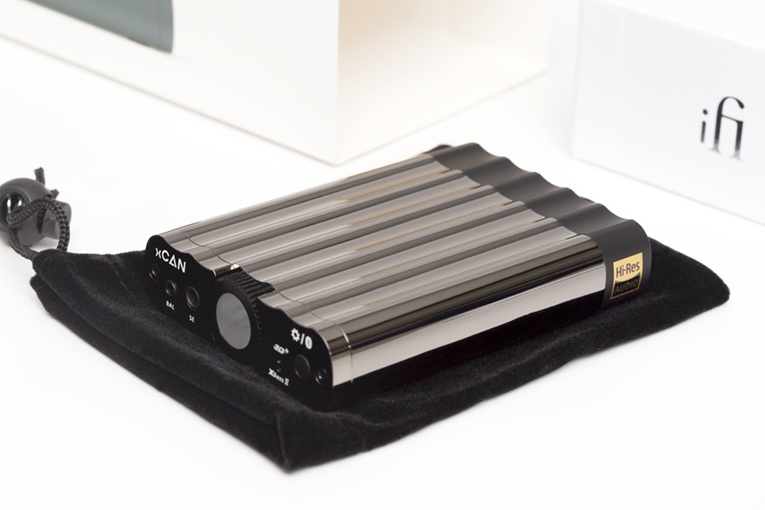
More than that, it’s the feature set that matters. XBass II sound enhancement couldn’t be easier to use, and provided serious improvement in sound quality through two clever options: Bass and Presence. And iFi’s 3D+ crossfeed circuit is available for those who enjoy this sort of effect, or find long-term headphone listening fatiguing. I didn’t like 3D+ that much, so I left it off.
If you’re looking for simple enhancements to your listening experience through a stock pair of earbuds, an iFi xCAN will be nice to have. If you’re mating your smartphone to a pair of high-end, inefficient, and/or high-impedance headphones that are difficult to drive, iFi’s compact, intuitive, elegant xCAN is a must-have.
. . . Diego Estan
Associated Equipment
- Headphones -- AKG earbuds (stock with Samsung S9), Sennheiser HD 800
- Preamplifier-DAC-headphone amp -- McIntosh Laboratory C47
- Sources -- Acer Windows 10 PC running foobar2000, Samsung Galaxy S9 smartphone
iFi Audio xCAN Headphone Amplifier
Price: $299 USD.
Warranty: One year repair or replacement.
iFi Audio
Southport, Merseyside
England, UK
Phone: +44 (0)1704-227-204
Website: www.ifi-audio.com





